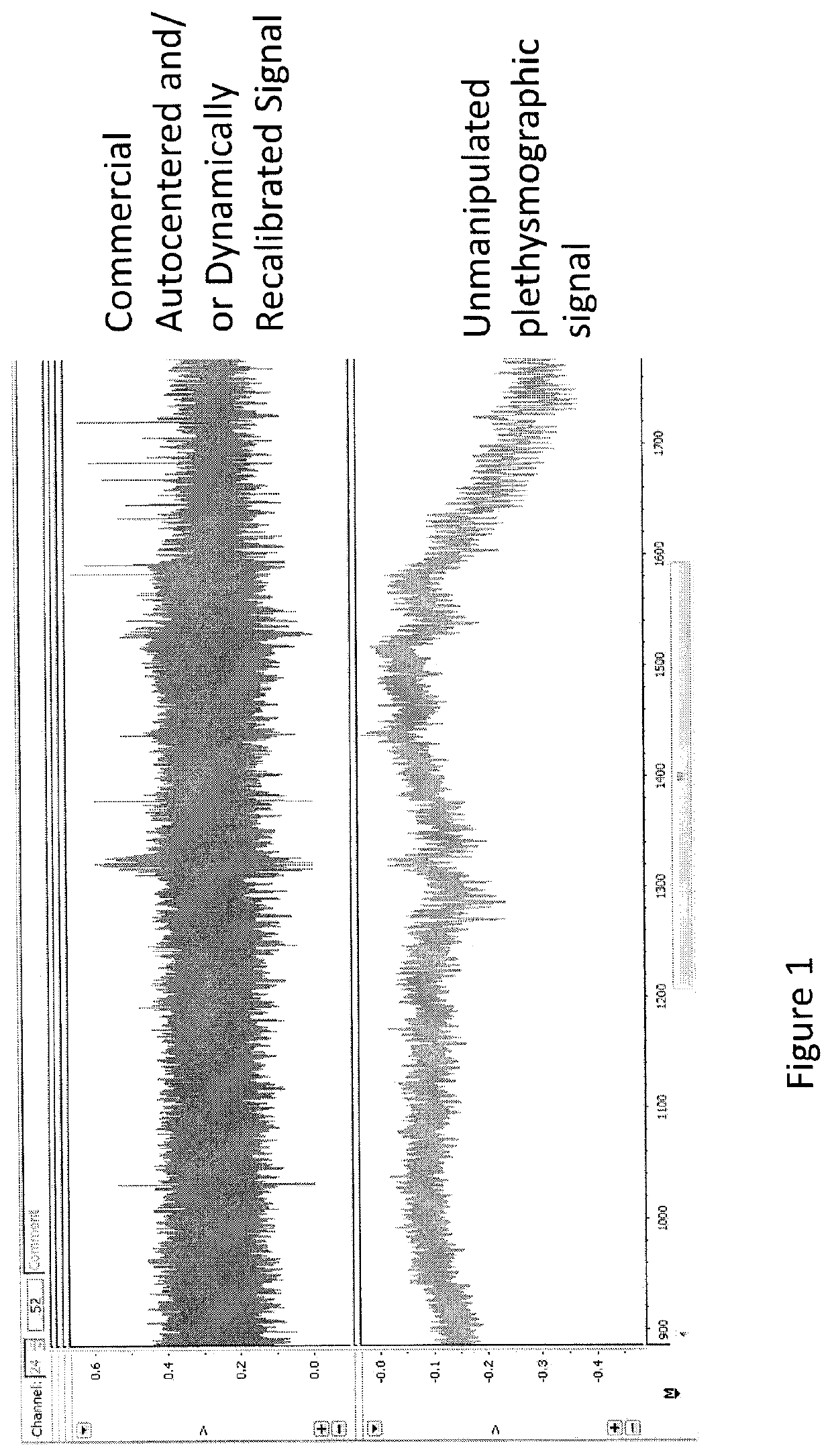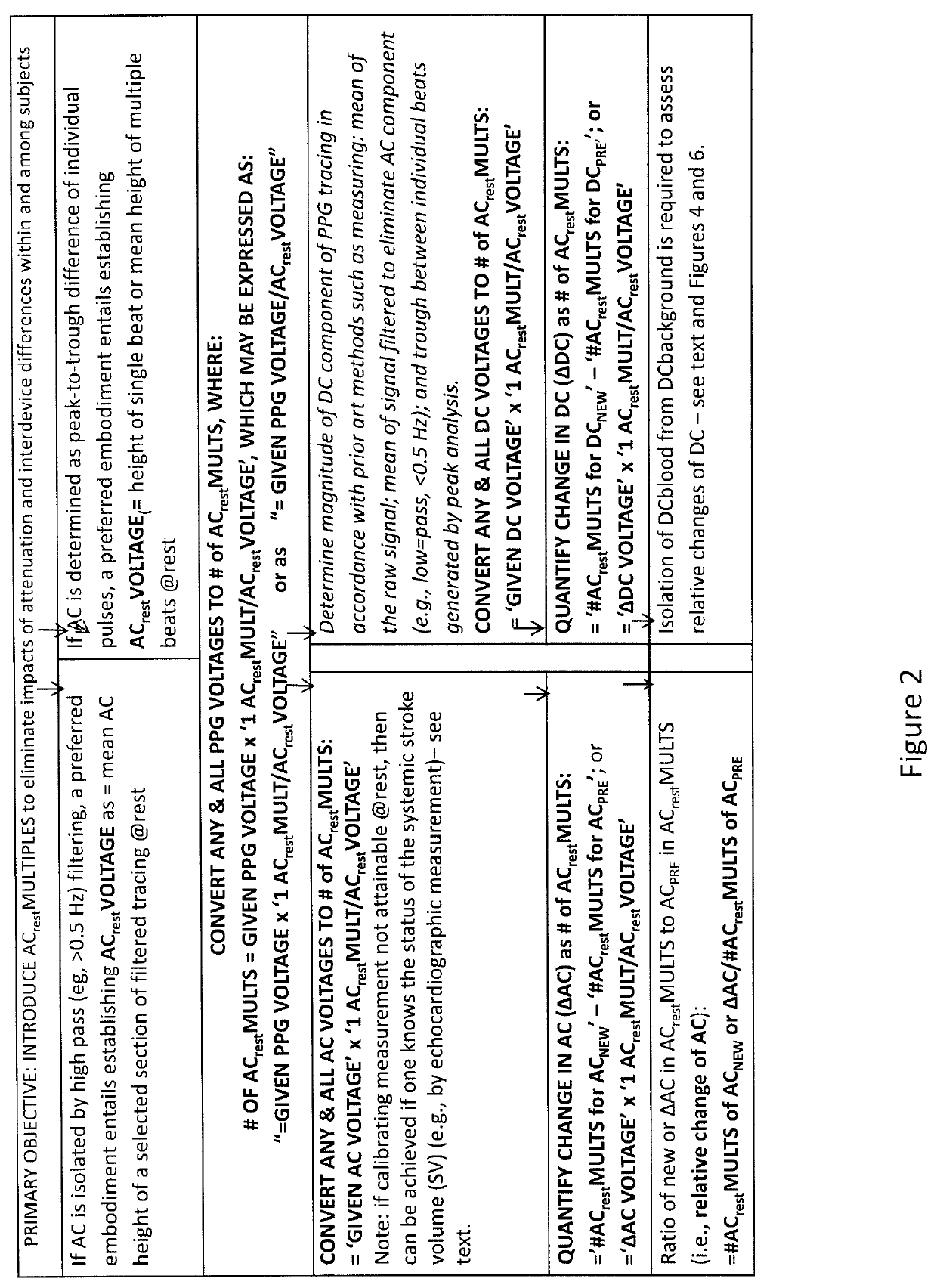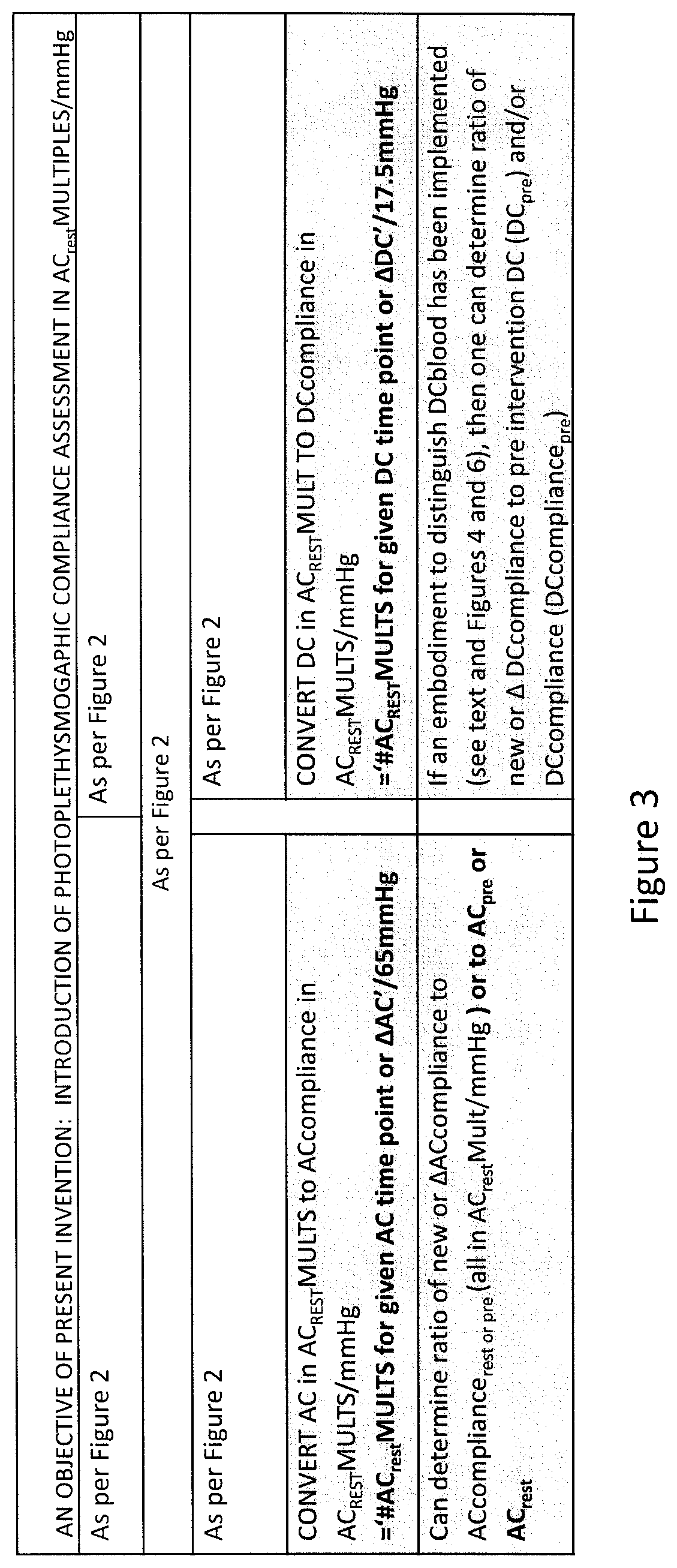Method and system enabling photoplethysmograph measurement of volume status
a technology of photoplethysmograph and volume status, which is applied in the field of method and system enabling photoplethysmograph measurement of volume status, can solve the problems of inability to fully characterize local physiologic impact and its relationship, thwart the monitoring of local volume and flow, and difficulty in monitoring systemic volum
- Summary
- Abstract
- Description
- Claims
- Application Information
AI Technical Summary
Benefits of technology
Problems solved by technology
Method used
Image
Examples
Embodiment Construction
lass="d_n">[0086]The detailed embodiments of the present invention are disclosed herein. It should be understood, however, that the disclosed embodiments are merely exemplary of the invention, which may be embodied in various forms. Therefore, the details disclosed herein are not to be interpreted as limiting, but merely as a basis for teaching one skilled in the art how to make and / or use the invention.
[0087]With reference to the accompanying figures, a system and method enabling photoplethysmograph monitoring and measurement of volume status by establishing the “AC Calibration Voltage,” which is the measured voltage generated by the small portion of a cardiac stroke volume delivered to a given photoplethysmograph at a given site in a given subject at the time of calibration, of a given photoplethysmograph at a given site under resting conditions so as to convert all voltages (photoplethysmographic (PPG) signal and its AC and DC components) to herein introduce “AC Multiples” of the...
PUM
 Login to View More
Login to View More Abstract
Description
Claims
Application Information
 Login to View More
Login to View More - Generate Ideas
- Intellectual Property
- Life Sciences
- Materials
- Tech Scout
- Unparalleled Data Quality
- Higher Quality Content
- 60% Fewer Hallucinations
Browse by: Latest US Patents, China's latest patents, Technical Efficacy Thesaurus, Application Domain, Technology Topic, Popular Technical Reports.
© 2025 PatSnap. All rights reserved.Legal|Privacy policy|Modern Slavery Act Transparency Statement|Sitemap|About US| Contact US: help@patsnap.com



